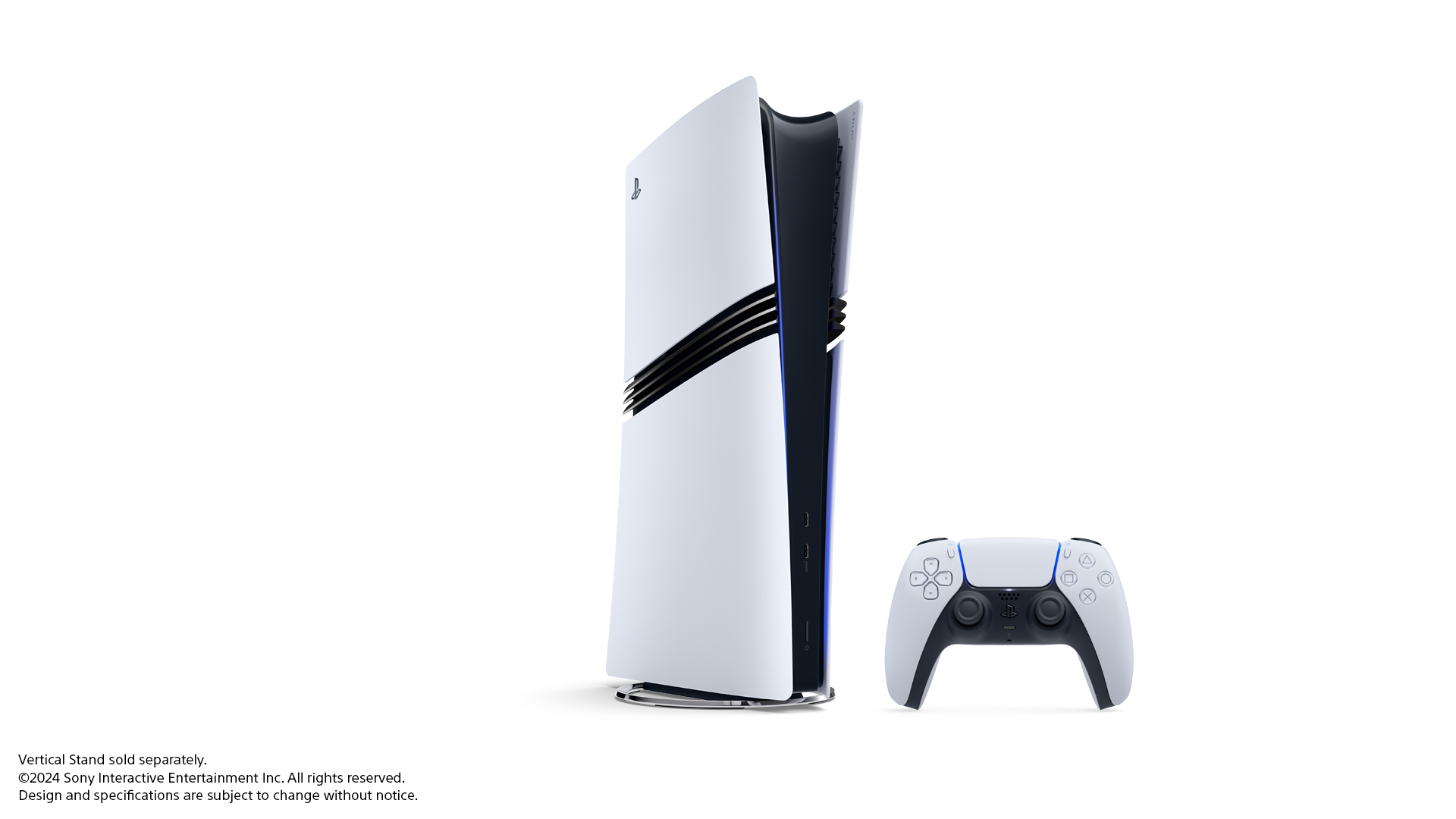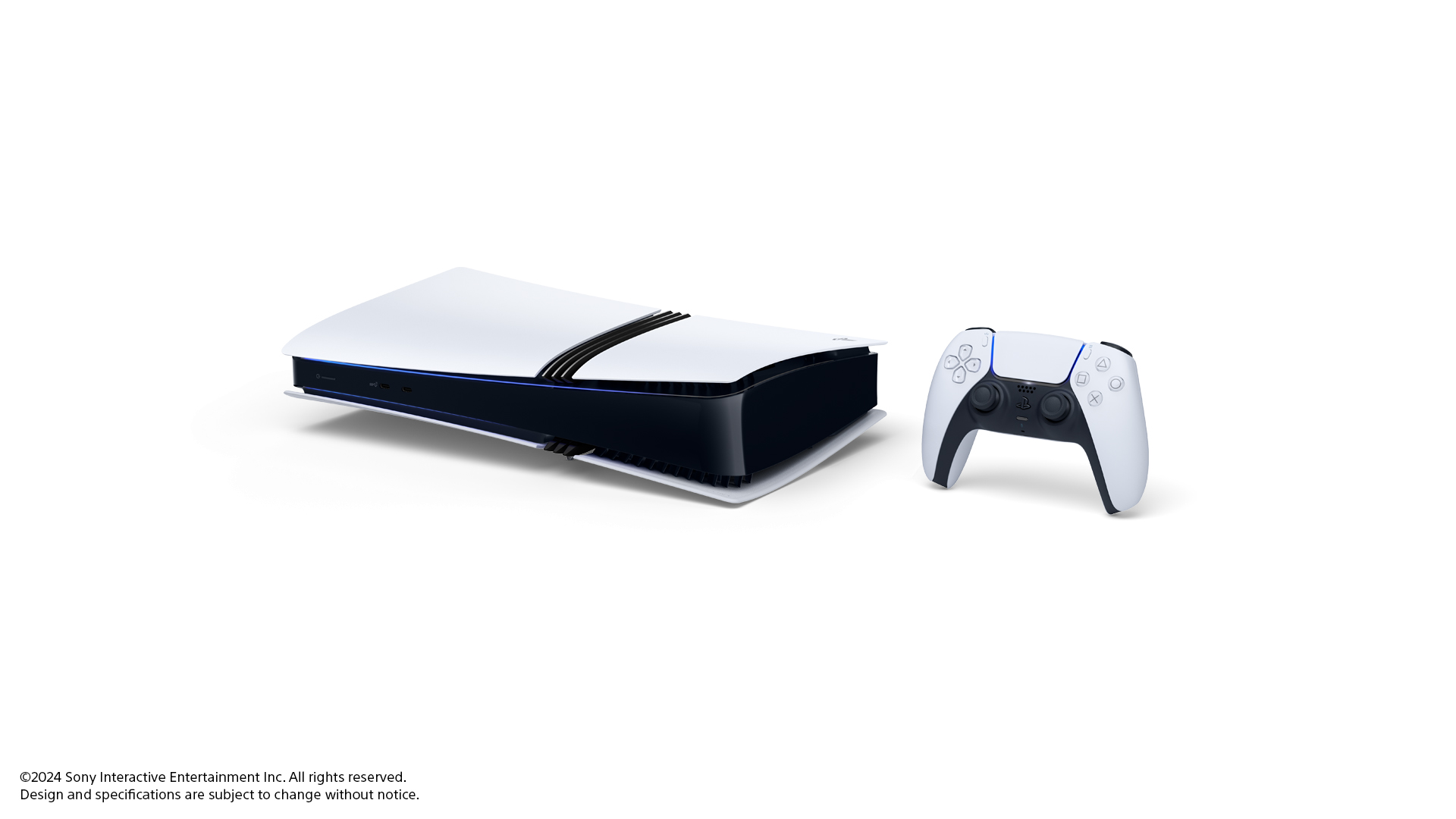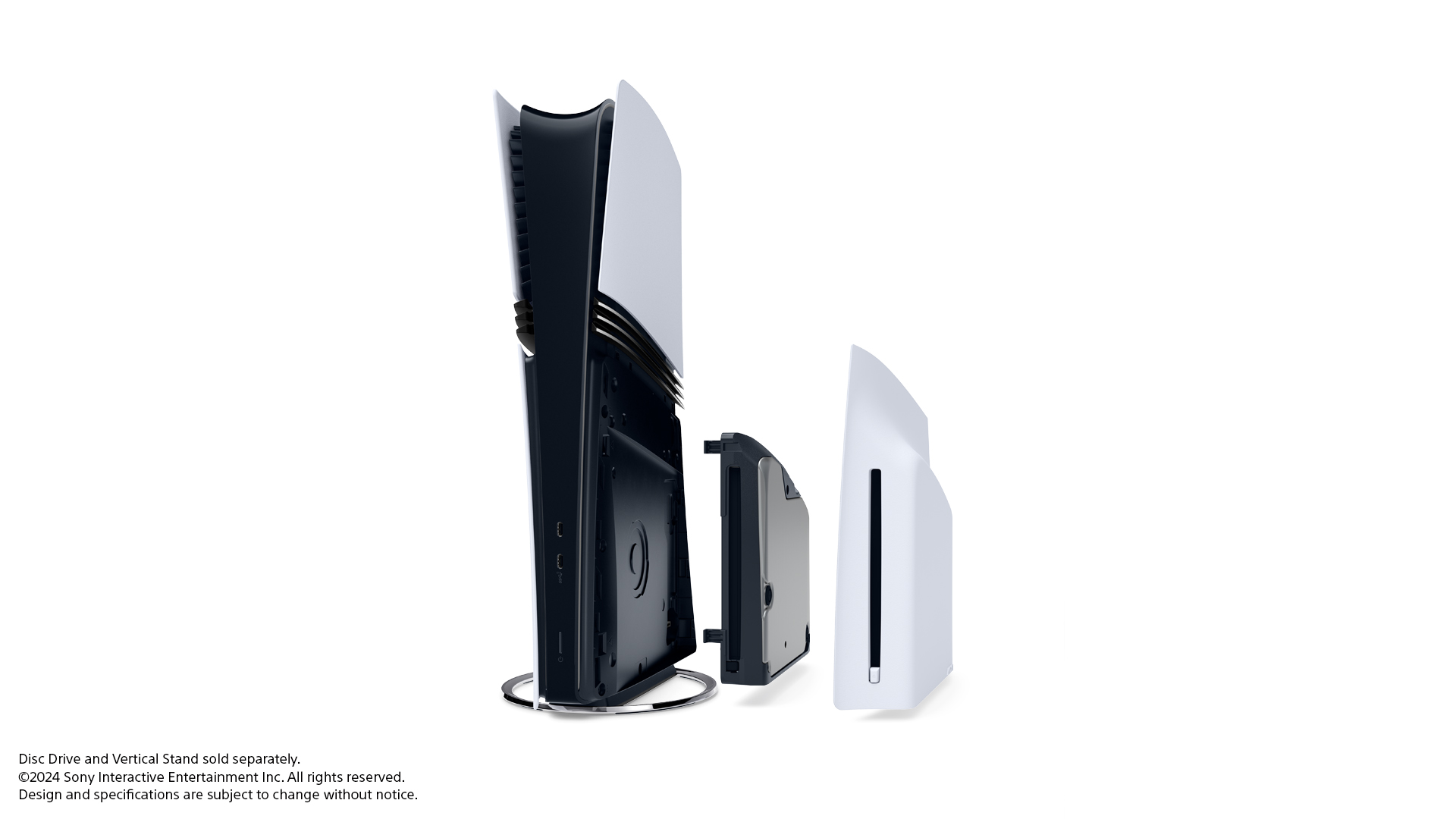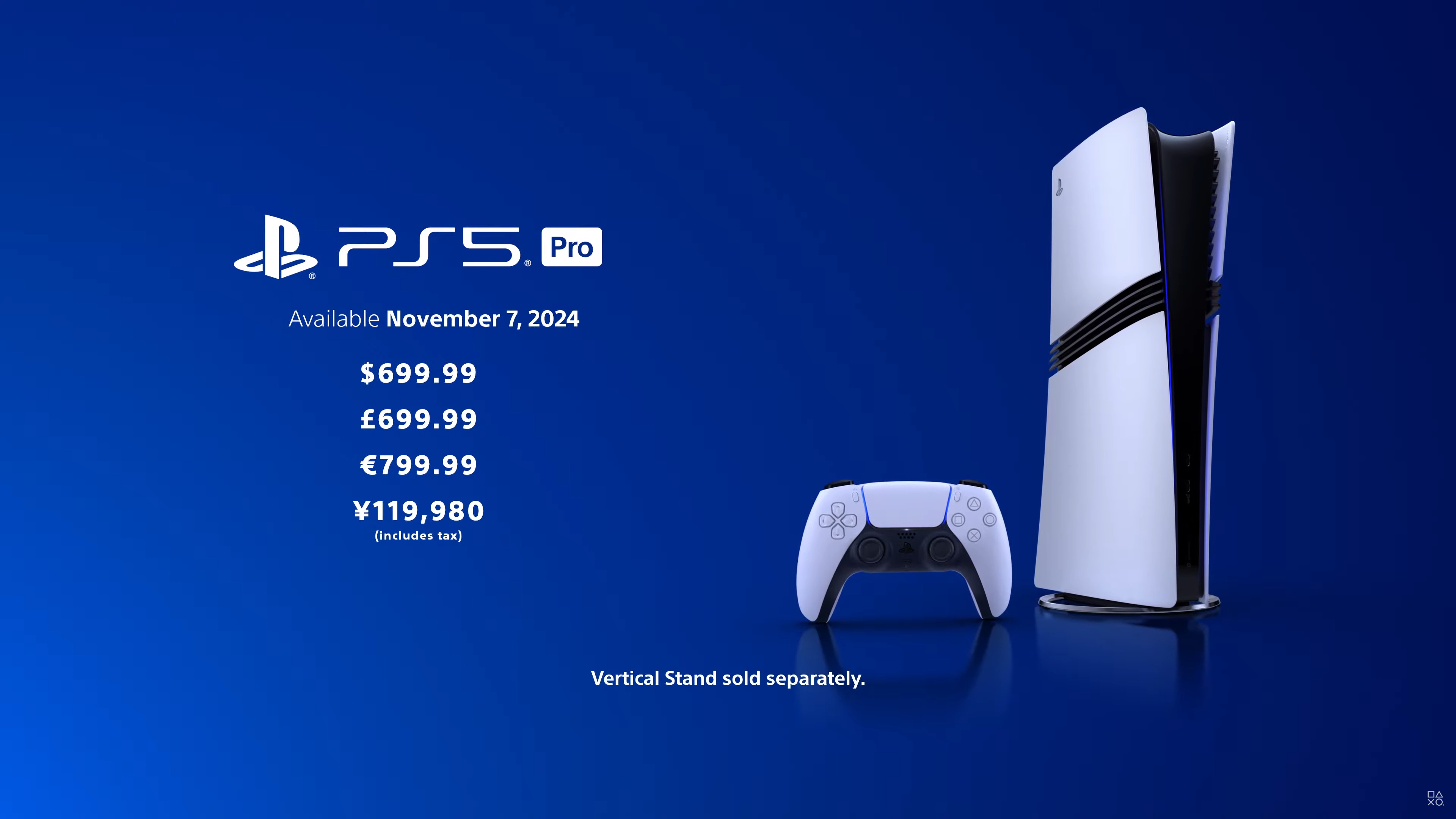
The PlayStation 5 Pro had been long rumored, and Sony started teasing it as PlayStation celebrated its 30-year anniversary. As expected, the new PS5 Pro features a redesigned chassis that omits the optical drive. But more importantly to hardware enthusiasts, it's getting a big upgrade in the GPU department along with improvements to the memory subsystem. Here's the breakdown of what's changing and how it will affect performance.
A lot has changed in the hardware world since the original PlayStation 5 was revealed in September 2020. Back then, Zen 2 / Ryzen 3000 CPUs were the fastest processors from AMD, though they were superseded by Zen 3 and Ryzen 5000 just a couple of months after the PS5 announcement. Each Ryzen CPU generation has typically brought a 10–15 percent improvement in IPC (instructions per cycle), a key performance indicator. AMD just launched its Zen 5 and Ryzen 9000 series CPUs, which are three full generations newer than the original PS5 processor. However, if you were hoping to see that in the PS5 Pro, prepare for some disappointment.
The PS5 Pro will seemingly stick with the Zen 2 architecture on the CPU — at least, Cerny made no mention of any CPU upgrades. That may allow PlayStation to better maintain backward compatibility and save on costs, That's not necessarily a bad thing, as the CPU generally isn't holding back performance on the PS5. There could be a shrink in the process node, from the original TSMC N7 7nm-class used on the PS5 to a more modern TSMC node like N5 or even N4P. Sony hasn't provided any details on this aspect yet. If there's a node shrink, which seems probable, it would bring some power and efficiency improvements to the table, allowing for slightly higher clocks on the CPU.
The big change is in the graphics department. The PS5 was the first taste of AMD's then-nascent RDNA 2 architecture — the PC 'Big Navi' Radeon RX 6000-series GPUs wouldn't begin shipping until November 18, 2020, one day before the PS5 officially went on sale. Even then, the PS5's 36 CU (Compute Unit) design only matches the RX 6700 10GB in terms of core specs. While it's a reasonably capable GPU for mainstream gaming, it certainly can't keep up with the likes of the RX 6800 XT, never mind the current generation RX 7800 XT. Now, we're looking forward to the AMD RDNA 4 GPUs, which are expected to begin shipping in early 2025.
So, what have Sony and AMD cooked up for the PS5 Pro? Sony isn't quite spilling all the beans, but it did say there's a 67% increase in compute units and 28% faster memory. There are also enhancements to double or even triple the ray tracing throughput and AI hardware of some form.
We will have to fill in some blanks and make educated guesses here. Considering RDNA 3 and RDNA 2 aren't radically different — the addition of WMMA instructions and the move to a GPU chiplet architecture are the primary changes — we suspect Sony and AMD are using some variant of RDNA 3, possibly the efficiency-optimized version called RDNA 3.5 that's going into the Strix Point Ryzen AI laptop processors.
Where Strix Point (Ryzen AI) tops out at 16 CUs, the Sony PS5 Pro GPU will pack an impressive 60 CUs. Clock speeds or even teraflops (TFLOPS) weren't discussed, with only a nebulous claim of "45% higher performance"—which accounts for both the GPU processing increase and the less significant bump in memory bandwidth.


RDNA 3 did offer some updates in the ray tracing department, and AMD may have taken things a step further for the custom PS5 Pro silicon. Or maybe it's some amalgamation of multiple GPU generations all wrapped up with a tidy little bow. Either way, the inclusion of 60 CUs — whether those are RDNA 2, 3, 3.5, or something else — should provide for significantly improved performance at higher resolutions and with higher fidelity. That's Cerny's main point: the PS5 Pro will effectively match the original PS5 "Performance mode" while delivering the image quality of "Fidelity mode."
Let's also talk about some of the other changes, specifically the enhanced ray tracing capabilities plus AI for PSSR: PlayStation Spectral Super Resolution. There have been rumors of a custom upscaling algorithm coming from Sony, and this seems to be the result. PlayStation consoles have long leveraged dynamic upscaling to help maintain a consistent gaming experience, so focusing on improving the quality of upscaling would be a good solution.
Nvidia's DLSS reigns as the best solution right now in terms of image quality, followed by Intel's XeSS and then AMD's FSR 2/3. Sony seems to be gunning for XeSS/DLSS quality, by using AI to improve the algorithm — something AMD hasn't attempted yet with FSR. It's also unclear what AI hardware is present or how fast it is in terms of TOPS (teraops, INT8 operations typically used in a lot of AI inference workloads) or FP16 TFLOPS. We'll have to wait for more details, but it's not too difficult to imagine a combination of GPU and NPU hardware providing enough horsepower to do a reasonable job at real-time dynamic upscaling.
It doesn't look like there's a change in memory capacity, only higher memory speeds. 28% faster translates to 18 Gbps GDDR6, which, when combined with the RDNA 2/3 Infinity Cache memory hierarchy, should be sufficient for what Sony's trying to achieve: good 4K rendering with all the bells and whistles, perhaps with upscaling enabled to help it get there. The 28% increase in memory speed means the PS5 Pro will have 28% more bandwidth as well: 576 GB/s compared to 448 GB/s on the original.
There are other changes as well. Storage requirements have also ballooned over the past four years, and the PS5's 825GB internal SSD looks pretty paltry when some games can soak up 200GB or more of space. You've always been able to add additional storage via the M.2 slot — check our best PS5 SSDs for recommendations — but Sony will offer the PS5 Pro factory equipped with a 2TB drive. Read speeds were already good on the 825GB and 1TB models, and Sony isn't switching to a PCIe 5.0 interface as it's not really necessary, but doubling the internal storage is a welcome boon.
Network connectivity also sees an upgrade to Wi-Fi 7 support, a forward-looking move as most households still use Wi-Fi 6 or older routers. The original PS5 included a Wi-Fi 6 2x2 solution with 80 MHz channel support, allowing for a theoretical 2,400 Mbps connection speed — over twice as fast as gigabit Ethernet. Wi-Fi 7 could more than double that speed, depending on how many channels are supported. That probably won't matter to most households, however, where gigabit connections are normally at the higher end of the spectrum. Also, Sony says, "PS5 Pro will also launch with the latest wireless technology, Wi-Fi 7, in territories supporting this standard," so perhaps some models will still ship with Wi-Fi 6.

Fundamental changes are coming to the design and aesthetics as well. The original PS5 was a big and chunky box with curvy sides, perhaps a bit too artistic for some tastes. The PS5 Slim kept the core aesthetic but, as the name implies, slimmed down the width and reduced the height. The rather large bulge for the optical drive on the other hand became even more noticeable. That optical drive bulge will be gone now, and there's a black "slash" across the middle of the system to clearly show that this is the PS5 Pro and not the PS5 Slim.
8K support was also mentioned in Sony's writeup. Sony touted the extremely high resolution on the original PS5's box at launch, though the company eventually quietly removed it. 8K monitors and TVs haven't been widespread since the launch of the PS5, but HDMI 2.1 technically allows for 8K and 60 Hz. With more processing power, Sony will apparently go for it again. Upscaling will of course be required to hit reasonable performance at 8K, and HDMI 2.1 can technically reach as high as 8K120 with DSC (Display Stream Compression), though we don't know if the PS5 Pro will support that or not.
The price tag, however, is high. When the system launches on November 7, it will cost $699, which is a steep increase over the $499 PS5 with disc drive or $449 Digital Edition. While the system won't come with an optical disc drive, you'll be able to buy one separately, similar to the PS5 Slim. Pre-orders start on September 26.
Overall, this is a welcome, if not particularly surprising, evolution of the PS5. We're about midway through the typical console lifecycle, and it's the right time for a full hardware refresh with a PS5 Pro. The CPU upgrade with the original PS5 over the PS4 was massive, so Sony didn't really need another big CPU change. GPUs, on the other hand, are the heart of any gaming system, PC or otherwise, and putting the majority of the upgrades into the graphics subsystem makes sense.
The PS5 Pro isn't going to beat a high-end PC in pure graphics horsepower, of course. Look at our GPU benchmarks hierarchy and you'll find that a 60 CU AMD GPU would land somewhere between the RX 6800 and RX 7800 XT in theoretical performance. As far as PC hardware goes, those occupy positions 21 and 12 on our hierarchy, respectively. So no: Console gamers aren't going to get the equivalent of an RTX 4090 for one-third of the cost. But they also don't need that level of hardware, and they're getting a fully equipped system. We're ultimately looking at about 50% more GPU performance than the original PS5, plus better upscaling, which together make for a sizeable upgrade in gaming potential.







